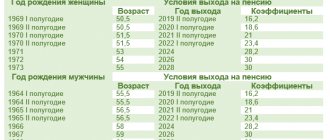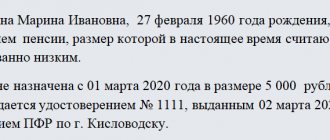Law for the benefit of the employer
Olga Yakushina
Tax expert-journalist
Current as of April 19, 2019
The regions of the Far North are characterized by harsh climatic conditions. The legislation of our country provides for a number of compensations for harm received by workers in the Far North and equivalent areas. In the article you can find a list of such areas.
Which areas belong to the Far North in 2019?
The list of regions of the Far North and equivalent areas was defined in the USSR - by Resolutions of the USSR Council of Ministers dated November 10, 1967 No. 1029 and January 3, 1983 No. 12.
In 2020, the list of regions of the Far North includes the following territories:
- All islands of the Arctic Ocean and its seas, as well as the islands of the Bering and Okhotsk seas;
- Murmansk region - completely;
- Arkhangelsk region - only the following territories: Nenets Autonomous Okrug, the city of Severodvinsk, Mezensky, Leshukonsky, Pinezhsky districts;
- Komi Republic - the cities of Vorkuta and Inta, the districts of Usinsky, Izhemsky, Ust-Tsilemsky, Pechora, the village of Ust-Lyzha with its subordinate territory;
- Tyumen region - Yamalo-Nenets Autonomous Okrug;
- Krasnoyarsk Territory - Taimyr (Dolgano-Nenets) and Evenki Autonomous Okrugs, the cities of Igarka and Norilsk, the North Yenisei and Turukhansky districts;
- Irkutsk region - Katangsky district;
- Republic of Yakutia - completely;
- Chukotka Autonomous Okrug - completely; Magadan region - completely; Kamchatka Territory - completely;
- Republic of Karelia - the city of Kostomuksha, Belomorsky, Kalevalsky, Kemsky, Loukhsky districts;
- Khabarovsk Territory - Ayano-Maisky and Okhotsk regions;
- Sakhalin region - the city of Okha, the districts of Kuril, Nogliki, Okha, North Kuril and South Kuril;
- Republic of Tyva - Mongun-Taiginsky, Todzhinsky, Shynaan rural administration districts of the Kyzyl district;
- Khanty-Mansiysk Autonomous Okrug - Berezovsky, Beloyarsky districts.
If it is indicated that a city belongs to the “extreme northern” area, then the territories subordinate to this city also belong to the regions of the Far North.
Story
Benefits for civil servants working in areas with harsh climates and other difficult conditions existed back in the Russian Empire (for example, preferential length of service).
During Soviet times, benefits for persons working in the Far North were established in 1932.
During the Great Patriotic War, the benefits for the population of the Far North that existed at that time were abolished. Benefits were restored in 1945, but the number of regions of the Far North was significantly reduced, and the concept of localities equated to regions of the Far North was introduced. In equal areas, the benefits were the same as in the regions of the Far North, with the exception of the duration of preferential holidays and the size of the northern percentage bonuses.
1960 The Decree of the Presidium of the Supreme Soviet of the USSR of February 10, 1960 “On the streamlining of benefits for persons working in the regions of the Far North and in areas equated to the regions of the Far North” was adopted. Approved by the Law of the USSR of May 7, 1960. Subsequently, it was replenished and adjusted.
- Decree No. 27 of June 30, 1962 stipulated payments when moving to another job (Part 6 of Article 1).
- The decree of July 23, 1981 provided for additional payment of daily allowance for travel time to the place of work in the amount of 3 rubles 50 kopecks, if the travel distance is more than 1000 km. The one-time benefit to employees and members of their families was also doubled against the norms provided for by Decree of the Council of Ministers of the USSR of July 15, 1981 No. 677 “On guarantees and compensation when moving to work in another area.”
- The decree of March 26, 1984 established the right to reserve living space during work in the Far North during the absence of not only the employee himself, but also his family members from his permanent place of residence.
- The decree of March 29, 1988 limited the right to combine unused vacations in whole or in part for no more than three years.
1967 Resolution of the Council of Ministers of the USSR dated November 10, 1967 No. 1029 approved the List of regions of the Far North and areas equivalent to them, which were subject to the above-mentioned decrees of the Soviet parliament.
Which areas are considered the Far North in 2019?
The list of areas that are considered the Far North in 2019 is much broader. It includes districts and settlements on the territory of the following constituent entities of the Russian Federation:
- Arkhangelsk region - the cities of Arkhangelsk, Novodvinsk, Onega, Mirny, Kotlas, Koryazhma, the districts of Plesetsky, Primorsky, Onega, Kholmogorsky, Vinogradovsky, Verkhnetoemsky, Lensky, Velsky, Vilegodsky, Kargopolsky, Konosha, Kotlassky, Krasnoborsky, Nyandomsky, Ustyansky, Shenkursky;
- Komi Republic - the cities of Ukhta, Syktyvkar, the districts of Vuktylsky, Sosnogorsky, Troitsko-Pechorsky, Udorsky, Knyazhpogostsky, Koygorodsky, Kortkerossky, Priluzsky, Syktyvdinsky, Sysolsky, Ust-Vymsky, Ust-Kulomsky;
- Perm region - Gainsky, Kosinsky, Kochevsky districts;
- Republic of Karelia - the cities of Petrozavodsk, Sortavala, districts Muezersky, Segezhsky, Kondopoga, Lakhdenpokhsky, Medvezhyegorsky, Olonetsky, Pitkyaranta, Prionezhsky, Pryazhinsky, Pudozhsky, Suoyarvsky;
- Khanty-Mansiysk Autonomous Okrug - Yugra: all, except Berezovsky and Beloyarsky districts (belong to the territories of the KS);
- Tyumen region - Uvat district;
- Tomsk region - the cities of Kolpashevo, Strezhevoy, the municipal formation "Kedrovy City" of the Tomsk region (Kedrovy, Pudino village, Ostanino, Kalininsk, Rogalevo, Tavanga, Lushnikovo villages), Aleksandrovsky, Bakcharsky, Verkhneketsky, Kargasoksky, Kolpashevo, Krivosheinsky districts, Molchanovsky, Parabelsky, Chainsky, Teguldetsky;
- Krasnoyarsk Territory - the cities of Yeniseisk, Lesosibirsk, Boguchansky, Yeniseisky, Kezhemsky, Motyginsky districts;
- Irkutsk region - the cities of Bodaibo, Ust-Ilimsk, Ust-Kut, Bratsk, districts Bodaibinsky, Bratsky, Kazachinsko-Lensky, Kirensky, Mamsko-Chuysky, Nizhneilimsky, Ust-Ilimsky, Ust-Kutsky;
- Republic of Buryatia - Bauntovsky, Severo-Baikalsky, Barguzinsky, Kurumkansky, Muisky districts;
- Chita region - Kalarsky, Tungiro-Olekminsky, Tungokochensky districts;
- Amur region - the cities of Zeya, Tynda, Selemdzhinsky, Tyndinsky districts;
- Primorsky Territory - the districts of Dalnegorsky, Kavalerovsky, Olginsky, Terneysky, the working village of Vostok of the Krasnoarmeysky district, Boguslavetsky, Vostretsovsky, Dalnekutsky, Izmailikhinsky, Melnichny, Roshchinsky and Taezhnensky village councils of the Krasnoarmeysky district;
- Khabarovsk Territory - the cities of Amursk, Komsomolsk-on-Amur, Nikolaevsk-on-Amur and Sovetskaya Gavan, the working village of Elban of the Amur region, Voznesensky, Padalinsky village councils, Amur region, Achansky, Dzhuensky, Omminsky village councils of the Amur region, Vaninsky, Verkhnebureinsky, Komsomolsky districts , Nikolaevsky, named after Polina Osipenko, Sovetsko-Gavansky, Solnechny, Tuguro-Chumikansky, Ulchsky;
- Sakhalin region - the entire territory, with the exception of areas listed in the list of regions of the Far North;
- Republic of Tyva - the city of Kyzyl, districts Bai-Taiginsky, Barun-Khemchiksky, Dzun-Khemchiksky, Kaa-Khemsky, Kyzylsky (except for the territory of the Shynaan rural administration), Ovursky, Piy-Khemsky, Sut-Kholsky, Tandinsky, Tes-Khemsky, Chaa -Kholsky, Chedi-Kholsky, Ulug-Khemsky, Erzinsky;
- Altai Republic - Ulagansky district.
If it is indicated that a settlement belongs to an area equated to the Far North, then the territories subordinate to this settlement also belong to the “equated” regions.
Literature
- Resolution of the Central Executive Committee of the Council of People's Commissars of the RSFSR dated May 11, 1927 “On benefits for employees of state institutions and enterprises in remote areas of the USSR.”
- Resolution of the All-Russian Central Executive Committee of the Council of People's Commissars of the RSFSR dated May 10, 1932 “On the introduction into force from January 1, 1932 of the Regulations on benefits for persons working in the Far North of the RSFSR.”
- Resolution of the Council of People's Commissars of the USSR of November 18, 1945 “On approval of the List of remote areas equated to regions of the Far North.”
- Resolution of the Council of Ministers of the USSR of November 10, 1967, with corrections and additions.
- Federal Law No. 122 of August 22, 2004.
Guarantees and benefits from the state
The government provides a number of benefits to people living and working in these regions.
- Supplements and regional coefficients for wages. For example, the Tomsk region has a premium coefficient of 1.5-1.3, depending on the area. The regional bonus in the Krasnoyarsk Territory is provided to civil servants in the amount of 30%, to persons under 30 years of age who have lived in the region for at least 5 years - 30%.
- Additional holidays are provided. Regions of the Far North - 24 days, regions with equal status - 14 days. In addition, workers in hazardous industries and those whose working hours are irregular have the right to rest beyond the norm.
- If an employee is laid off or the company ceases to exist, he continues to receive an average salary for 4-6 months from the date of termination of work.
- A woman's working week has been shortened. It is 36 hours.
- Travel to and from your vacation spot is paid. As a rule, after providing documents confirming expenses, their amounts are compensated by payments. This privilege can be used twice a year. In addition, the cost of transporting luggage weighing up to 30 kg will be compensated.
- Parents of children under 16 years of age have the right to take an unpaid additional day off. If there are two or more children in a family, then such a non-working day will be provided for each of them.
- Early retirement: women at 45-50 years old, men at 50-55 years old (depending on length of work in the North). The size of pension payments, of course, exceeds the Russian average. In case of further moving to other regions, the person retains the so-called “northern pension” and continues to receive it in full.
- Providing social assistance in purchasing housing for people moving from the Far North. The amount will depend on factors such as work experience.
To receive most preferences and guarantees, work experience in these areas is required. Therefore, you should not expect to get all the benefits immediately, from the first days of employment.
Nevertheless, the employee receives a number of guarantees immediately. These include compensation for moving and rental costs.
Notes
- 1 2 3 Tarakanov M. A. Evolution of the spatial localization of the concepts “Far North” and “North” in Russia // National interests: priorities and security. — Vol. No. 26 / 2010. - pp. 32-41.
- List of regions of the Far North and localities equated to regions of the Far North, approved by a resolution of the Council of Ministers of the USSR of November 10, 1967, with corrections and additions.
- in accordance with Article 82.1 of the Federal Law of October 6, 2003 No. 131-FZ “On the general principles of organizing local self-government in the Russian Federation.”
- Decree of the Government of the Russian Federation of May 23, 2000 No. 402 “On approval of the list of regions of the Far North and equivalent areas with limited terms for the delivery of goods (products).”
- Decree of the Government of the Russian Federation dated 03.03.2012 N 170 “On the classification of Berezovsky and Beloyarsky districts of the Khanty-Mansiysk Autonomous Okrug - Ugra as regions of the Far North” Archival copy dated October 23, 2013 on the Wayback Machine Berezovsky and Beloyarsky districts of the Khanty-Mansiysk Autonomous Okrug - Ugra from 01.01 .2013 are classified as regions of the Far North.
- This “equation” was made for the following reasons:
- Some areas do not legally belong to the Far North, but the local climate is no less harsh.
- due to the remoteness and inaccessibility of these places.
- Intensive industrial development of new territories began, and a great need for workers arose. An “incentive” for attracting new “workers” could be increased wages and benefits provided.
- The Shantar Islands administratively belong to the Tuguro-Chumikansky district and are a region of the Far North.
- Law of the Russian Federation of February 19, 1993 No. 4520-1 “On state guarantees and compensation for persons working and living in the Far North and equivalent areas” (with amendments and additions)
- Resolution of the Council of People's Commissars of the RSFSR dated October 26, 1932 "On establishing the territory covered by the resolution of the All-Russian Central Executive Committee and the Council of People's Commissars of the RSFSR dated May 10, 1932 on benefits for persons working in the Far North."
- Decree of the Presidium of the USSR Armed Forces dated October 3, 1942 “On stopping the calculation of percentage bonuses to the wages of workers and employees and providing them with other benefits related to work in remote areas.”
- Decree of the Presidium of the USSR Armed Forces dated August 1, 1945 “On benefits for persons working in the Far North”
- Decree of the Presidium of the USSR Armed Forces of February 10, 1960 “On the streamlining of benefits for persons working in the regions of the Far North and in areas equated to the regions of the Far North” (approved by the Law of the USSR of May 7, 1960) (as amended on March 29, 1988 .) | GUARANTEE. base.garant.ru. Retrieved November 29, 2020.
- Analysis of the current situation of isolated power supply systems with high energy costs
- Andrey Treyvish. Russia: population and space. Too much north. - Demoscope Weekly, 1 - January 19, 2003. - No. 95-96.
Information about working in the Far North
Any site provides many job vacancies in these regions. As a rule, it pays well. All proposals can be divided into two groups:
- Shift work. The duration of the shift can vary from a couple of months to several years.
- Live-in job. As a rule, here we are talking about the complete relocation of the employee and his entire family to a permanent place of residence in a particular locality. The largest organizations pay for rent or provide it themselves.
However, it is very difficult to find a rotational job offer posted directly by an employer. In most cases, they are supplied by intermediary companies.
Cooperation with them is associated with great risks. And often, such advertisements can also be placed by scammers.
For example: to get hired, a person is asked to pay a certain amount of money to guarantee a place in the company. You should not give in to such persuasion. This is clearly the work of scammers. A real company will not spoil its reputation with such offers.
When applying for employment in large organizations, in most cases, temporary registration is required. The employee should think through this question in advance. Smaller, private companies do not pay attention to this. However, working there is more risky, because salary delays most often occur there.
Most small organizations experience high employee turnover. This occurs due to the discrepancy between employee expectations and actual working conditions and remuneration. Getting into a large company is quite difficult.
In recent years, work in the North has become less stable compared to the Soviet period. Therefore, you should remember the following important points:
- Concluding an employment contract will not be superfluous. Before signing it, it is better to talk with an engineer or foreman and personally check the living conditions (dishonest organizations, as a rule, try to hide this information).
- Try to clarify with employees whether there are delays in payments. Salaries at oil production facilities are often withheld for several months. Often the reason for this lies in the delivery time of objects, which can fluctuate depending on various factors.
Jobs that will be in demand:
- Drillers, assistant drilling rig operators, engineers, geologists (approximate salary 60,000-100,000 rubles).
- Workers specializing in installation, electric welding, gas welding, construction, finishing work, etc. (salary about 50,000 rubles).
- Drivers of cars, trucks, cranes, bulldozers, excavators. (approximate salary 50,000-60,000 rubles).
The most common vacancies for women: cooks, storekeepers, maids, finishing work masters.
As a rule, the listed professions are in demand for work on a rotational basis. In cities and towns, vacancies are the same as in other parts of the Russian Federation (teachers, waiters, cleaners, salespeople, hairdressers, pharmacists, etc.)
Some employers may ask to see a medical certificate stating that the person’s health condition allows him to live and work in the Far North.
According to people who chose to move to the North for the sake of improving living conditions: in addition to high wages, prices for food and housing there will be higher than the Russian average. This needs to be taken into account.








